Wooden fence
A wooden fence around a house is a classic option, suitable for a cozy dacha or country estate. Some of the main advantages of a wooden fence are its naturalness and environmental friendliness. It fits perfectly into the environment, is not conspicuous, and does not stand out. Installing a wooden fence is a simple process that anyone can handle. You will not have to call specialists to build or repair the fence, and if individual parts are broken, they can be easily replaced.
A variety of choices is another positive side of the coin. A wooden fence is made from new and barn wood, the boards are placed vertically, horizontally or at an angle. The appearance can be kept in its natural shade, or painted in any desired shade.

The photo shows a wooden ranch
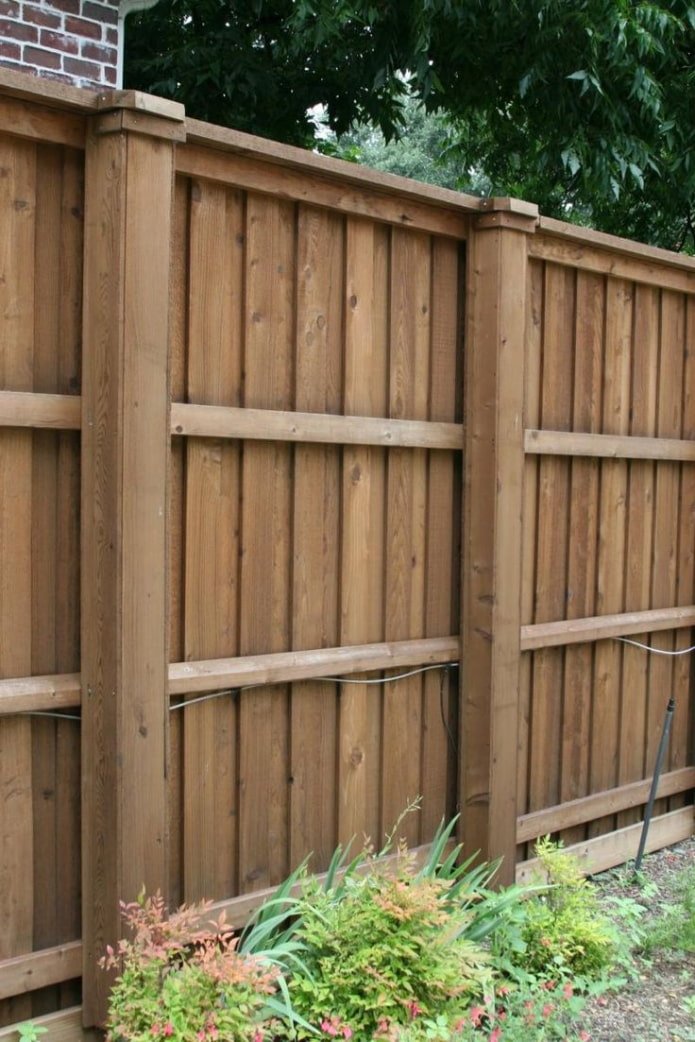
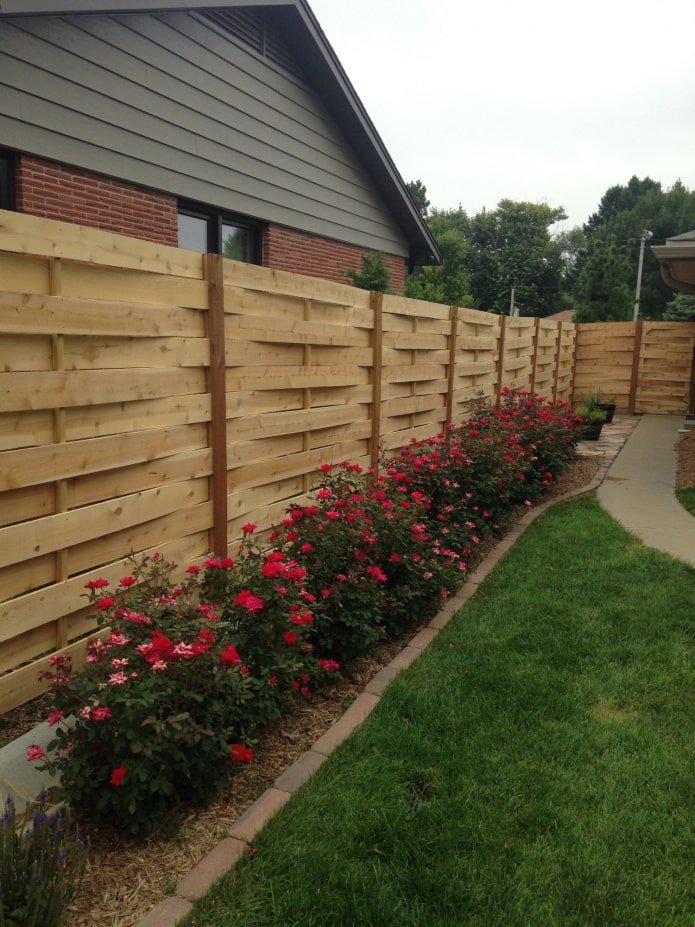
The classic type of fence is a picket fence – the boards are installed vertically, with or without gaps. Replace the flat planks with pointed logs – you get a palisade. An analogue of the picket fence from the USA is a ranch, the elements here are located horizontally.
If the fence will perform an exclusively decorative function – place the bars diagonally or make a lattice from slats. The disadvantages of a wooden fence include its relative unreliability: the boards are easy to break, and they do not last as long as stone or brick.
Important! Wooden fence is the most budget-friendly of all.
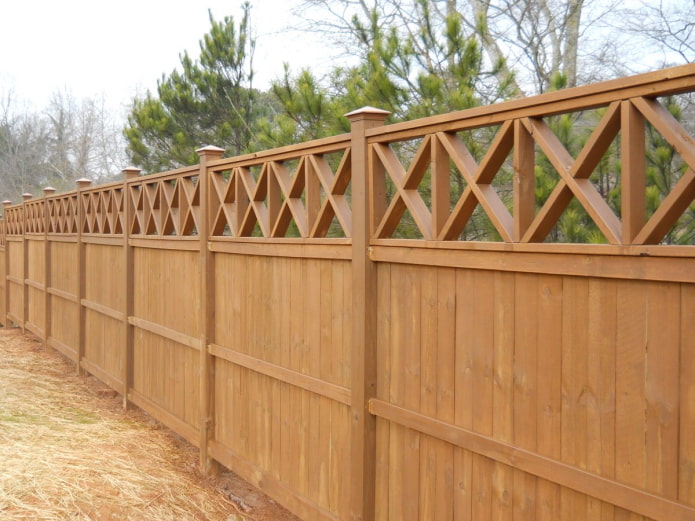
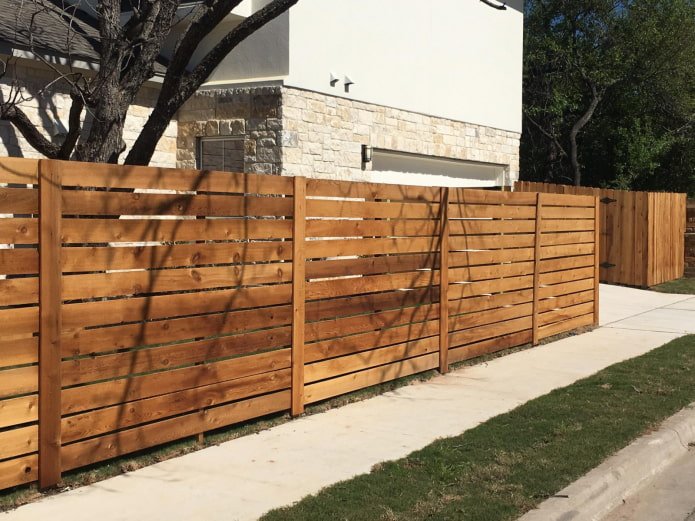
Stone fence
Want to make something for centuries? Use natural stone! This applies to both interior work in the house and landscaping of the garden plot. This material for fencing private homes is reliable and practical, although the design will not be cheap (the material itself and payment for the work of builders) – but it will serve faithfully for many decades.
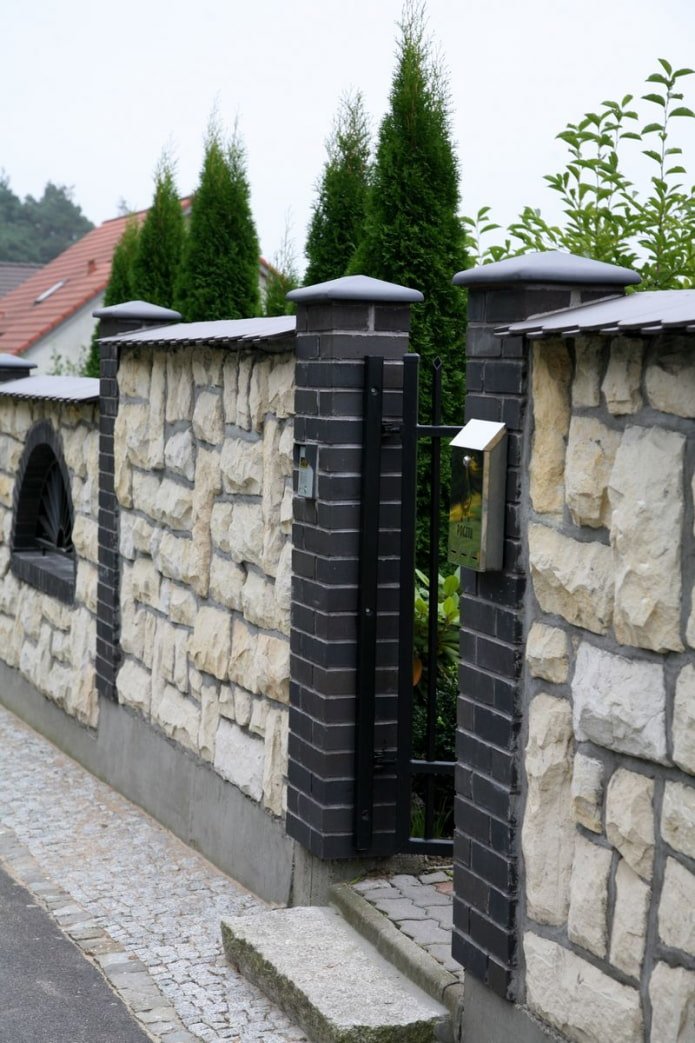
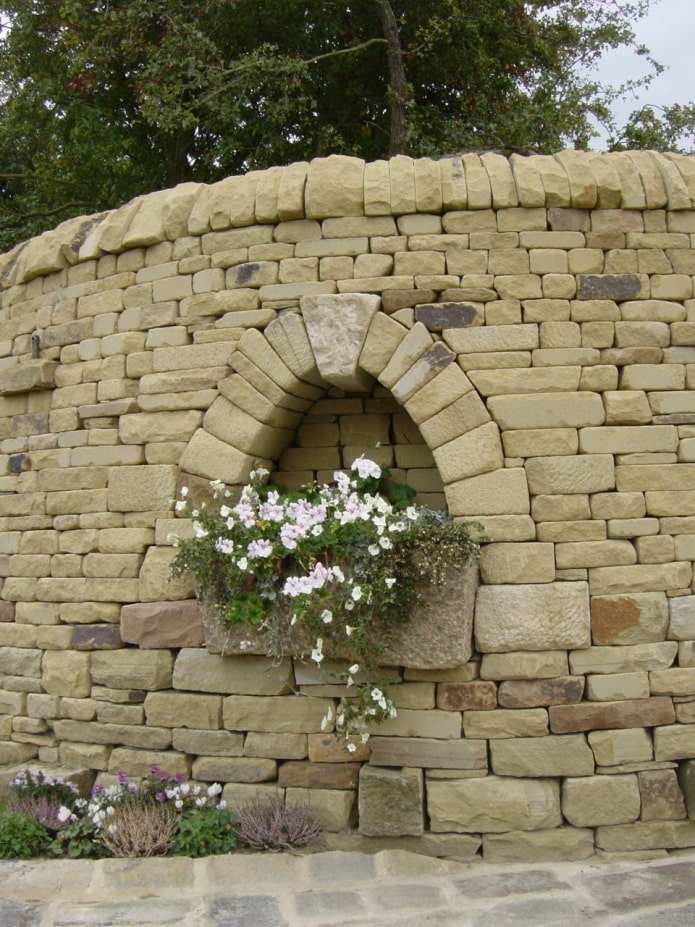
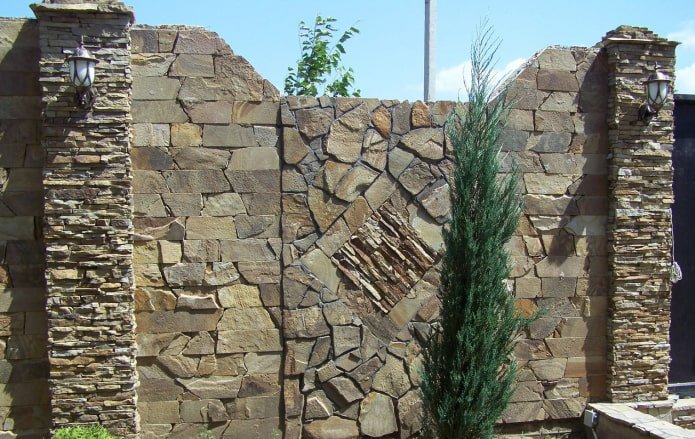
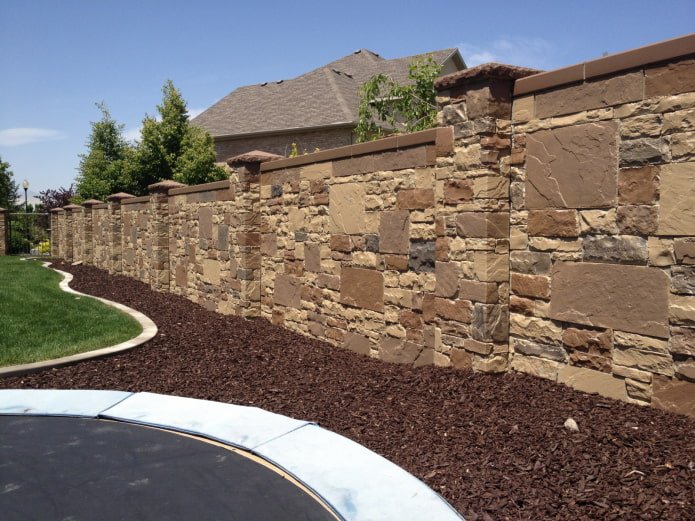
The photo shows a stone fence with columns
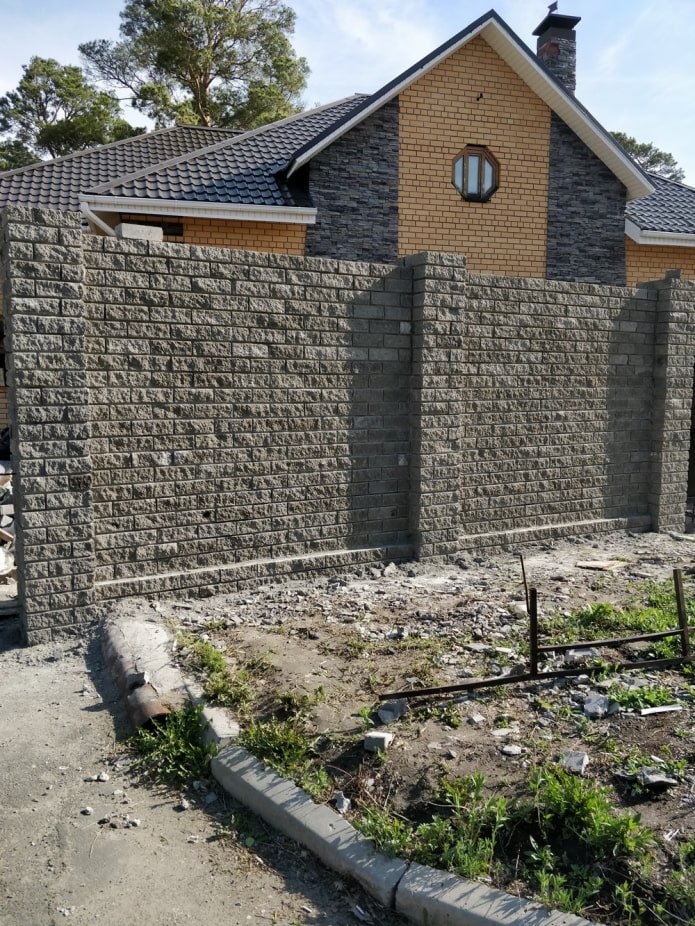
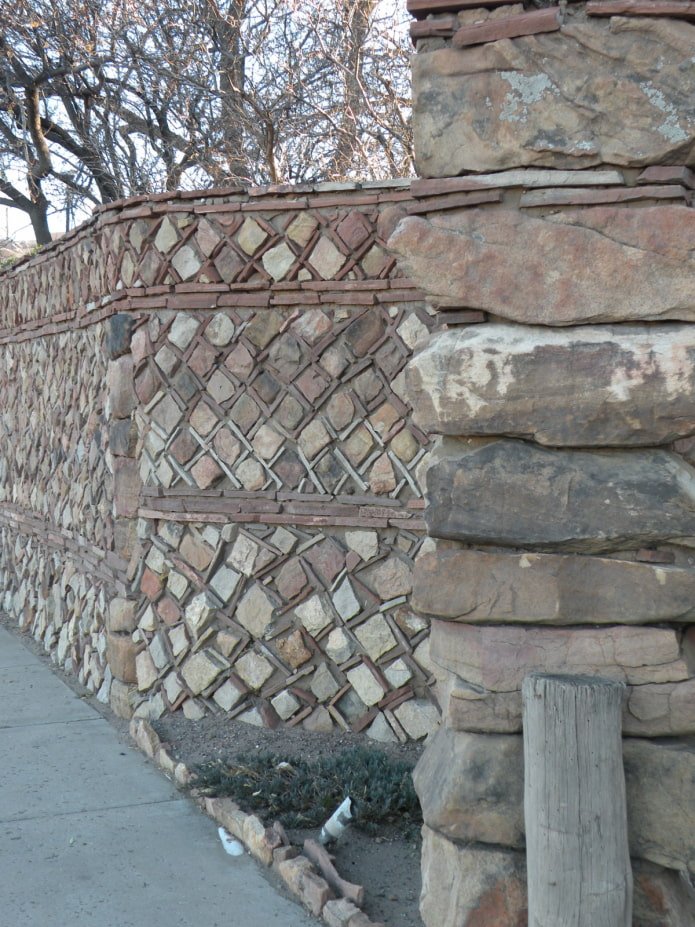
A fence made of stone can be solid and consist only of stone blocks, or they are combined with metal parts, giving the structure a more decorative look. Stone sculptures are necessarily installed on a foundation – therefore, you will have to tinker with the installation of such a fence for a private house.
Advice! A stone fence looks most harmonious near a house with a stone facade.
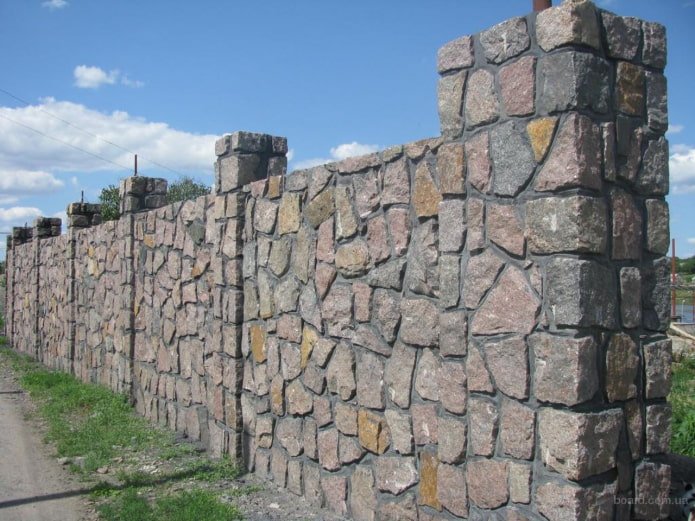
Brick fence
A brick fence retains all the positive aspects of stone: long service life, reliable protection from thieves and prying eyes, attractive appearance. But at the same time, brick construction is simpler and cheaper, both the material itself and the services of specialists.
As in the case of stone decoration, a brick fence is best combined with a brick country house. It is desirable that the buildings do not differ from each other even in the color of the blocks: a red house suggests a red fence.
A brick fence, despite its urban appearance, harmonizes perfectly with green foliage, brown trees, blue sky and other elements of nature. Especially when it comes to red fired brick.
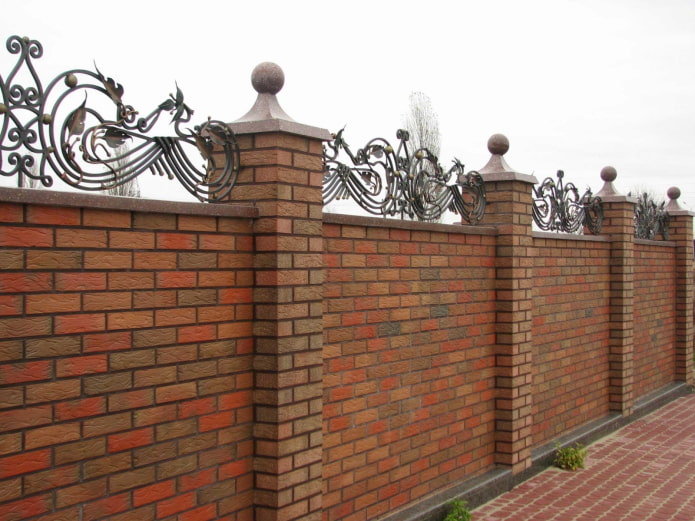
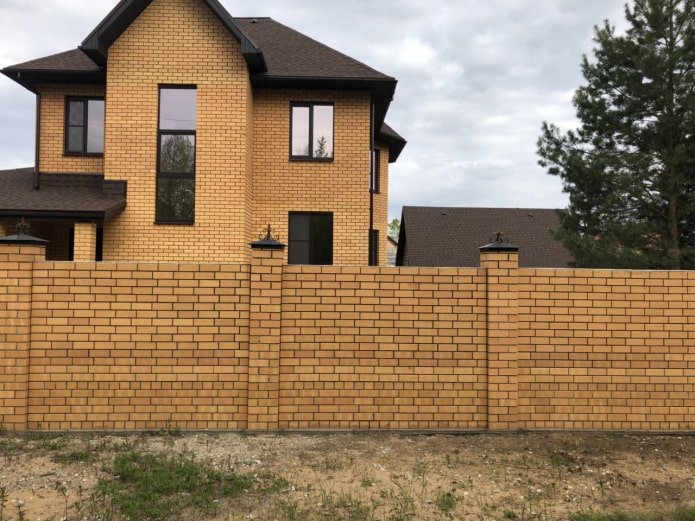
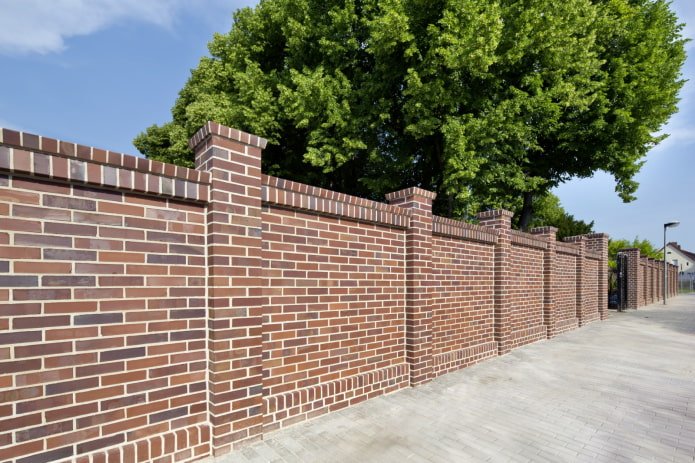
The photo shows a solid brick fence
Concrete fence
Reinforced concrete structures are the choice of those who want it fast, simple and practical. In fact, the construction of a concrete fence does not require large investments and efforts, but it is no less high-quality, beautiful and durable, in comparison with stone or brick.
There are a great many variations of reinforced concrete – it can imitate block masonry, natural stone, slate and other surfaces. Therefore, if the house, for example, is faced with stone, it is not necessary to order an expensive fence from the same material: it is enough to choose a suitable model at a reinforced concrete plant.
Thanks to the support pillars, a foundation is not needed – therefore, concrete is installed in any soil composition and is not afraid of elevation changes.
Important! Concrete is the most practical: in terms of price-quality ratio it wins over any other type.
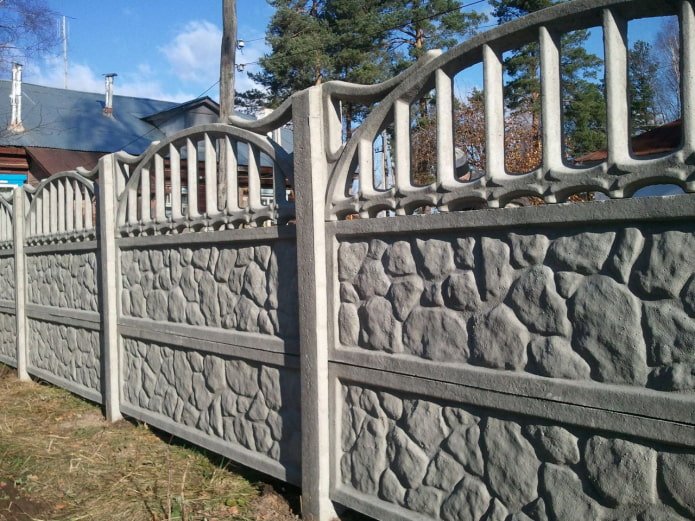
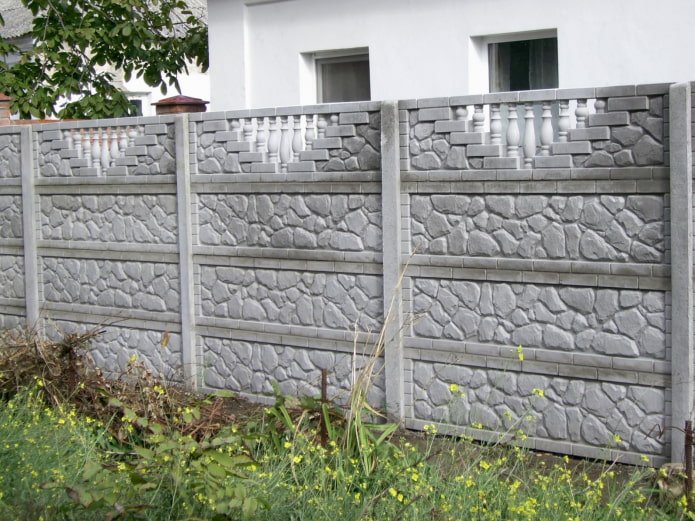
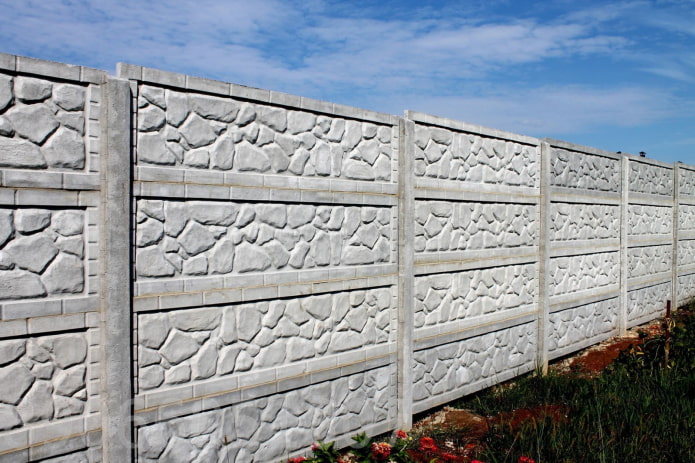
Metal fence
A metal fence is another option if you need to make it for a long time. But unlike the same stone, there are many more variations in the case of metal.
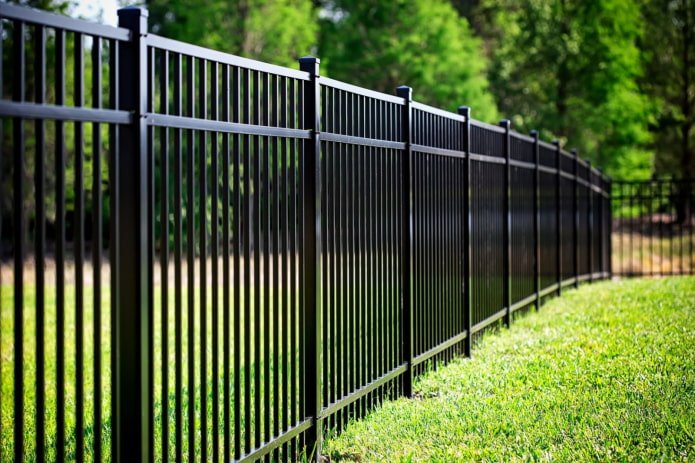
The photo shows a picket fence made of metal pipes
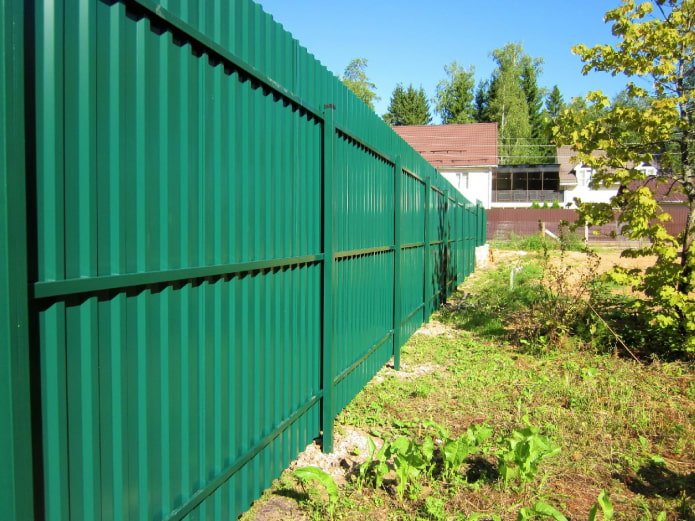

- Profiled sheet. Profiled metal sheets are economical, more suitable as temporary structures. Usually, corrugated sheet is used – this is metal already painted with a special anti-corrosion paint, which does not rust under water and does not fade in the sun. The main disadvantage of such a fence is high heat capacity and light reflection. Any plants planted near metal, even painted, are doomed to sunburn.
- Profile pipe. Externally, the structure resembles a picket fence, but the planks here are not wooden, but metal – so strength and durability are guaranteed. The relative disadvantages include absolute transparency – you can’t hide from prying eyes behind such a picket fence. And it will not muffle the noise of cars. But the pipe structure is minimalistic, does not attract unnecessary attention, and suits all styles.
- Wrought iron fence. Previously, only wealthy citizens could afford forging, because it was done by experienced craftsmen by hand. Today, forged parts are made in factories using special equipment, so their price has become more affordable. This fence idea will appeal to those who are looking for decorativeness, want to decorate their territory, and do not like simple solutions. The disadvantages of a forged structure are the same as those of a pipe: transparency, lack of sound absorption.
- Chain-link mesh. Belongs to the “cheap and cheerful” category, usually used in summer cottages where it is necessary to simply outline the boundaries of the territory. The advantages of the mesh include high light transmittance and the ability to grow climbing plants without additional supports. By the way, if you need to close yourself off from your neighbors, plant hops, ivy or maiden grapes along the plot – the vines will quickly fill the gaps and create a dense natural canvas over the chain-link.

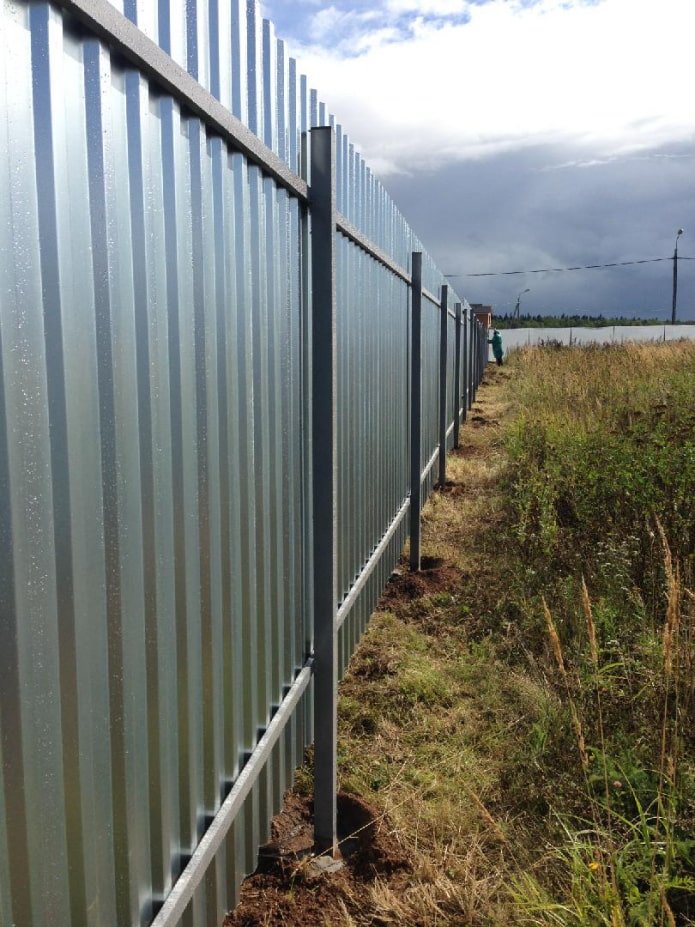
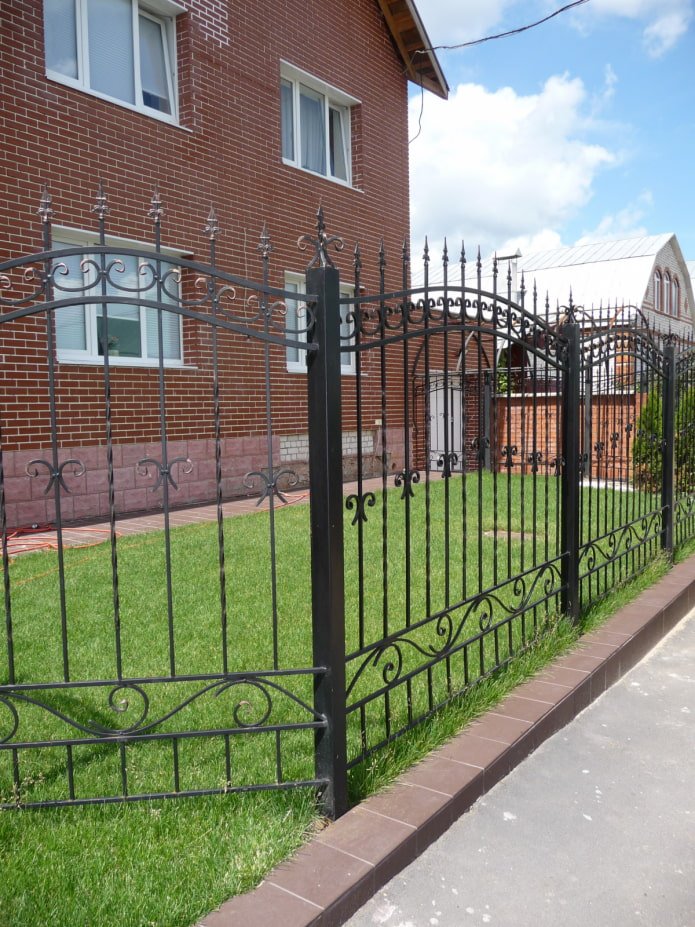
Slate fence
Slate is a mixture of asbestos, cement and water. Not the most suitable option for fencing, but due to its low cost and ease of installation, it is popular. Before buying, keep in mind that slate is quite brittle, it is afraid of impacts and even an accidentally flying stone can easily make a hole.
To make the fence last longer, choose pressed slate: it is more expensive, but denser – which means less brittle, and also frost-resistant. If you prefer a wave, take a unified type of profile (mark UV) – among other types it is the most durable.
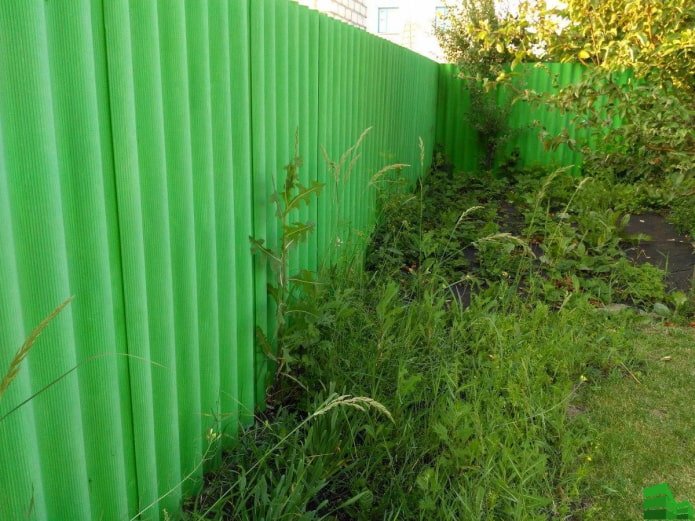


Vinyl fence
PVC is actively used in all spheres of human activity and not so long ago they began to make fences from vinyl. They are distinguished by a stylish, modern look, but have one serious drawback: fear of temperature changes. Polyvinyl chloride also has difficulty withstanding prolonged low temperatures – therefore, plastic should not be used in northern latitudes.
The advantages include safety: even if destroyed, sharp fragments are not formed, therefore vinyl fencing is often used to decorate animal pens. By the way, horses don’t chew plastic – another plus for vinyl.

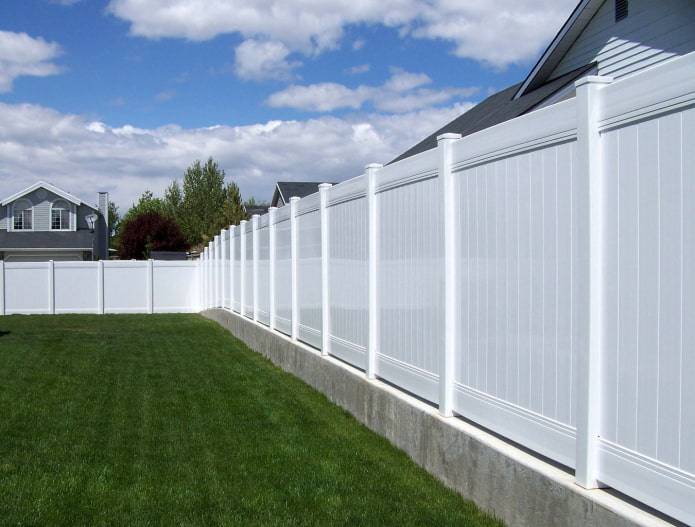
Hedge
It is impossible to come up with a more natural and organic design than a fence made of living plants! A hedge will 100% be appropriate in a garden. Being part of the landscape, it reliably hides the territory from passers-by, is a virtually insurmountable obstacle for vandals (especially if bushes with thorns are planted). A hedge will protect against dust: landscaping not only traps harmful substances, but also enriches the yard with oxygen.
The disadvantages include the long growth of seedlings to the desired density and height. The need to care for the hedge makes it less attractive in the eyes of people who do not want to shoulder additional concerns.
Choose plants for the fence for your climate, soil composition. The most unpretentious are dogwood, cotoneaster, lilac, hawthorn, acacia. All of the listed shrubs are deciduous. If you want an evergreen hedge, pay attention to thuja, juniper, cypress, spruce.
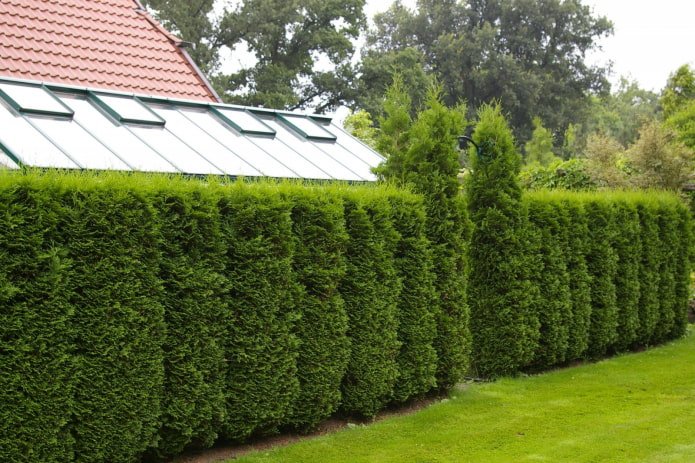
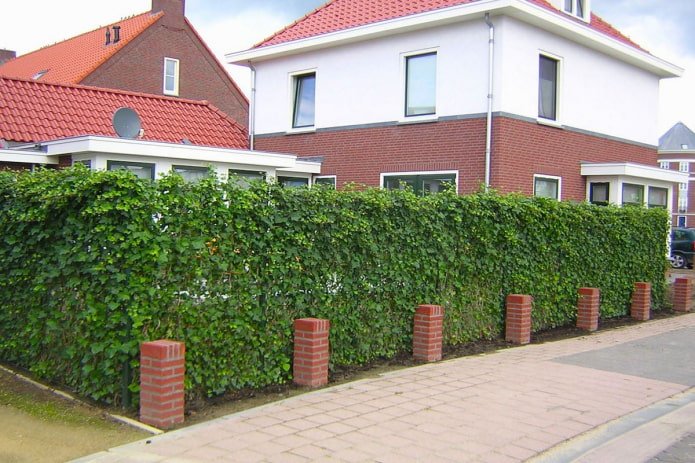
Combined fences
When choosing a fence for a private house from a photo, you can notice that not all of them are made of the same material. Often it is a combination of 2-3 components. Good examples of combined fencing:
- brick pillars with forged or pipe sections;
- stone columns with horizontally located boards between them;
- brick pillars with intermediate sections made of picket fence;
- stone foundation, brick pillars, sections made of corrugated sheet;
- low solid stone fence, extended in height using wood or metal;
- metal picket fence over corrugated sheet.
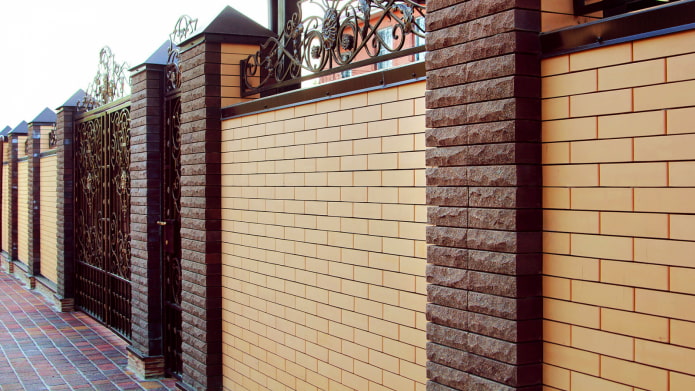
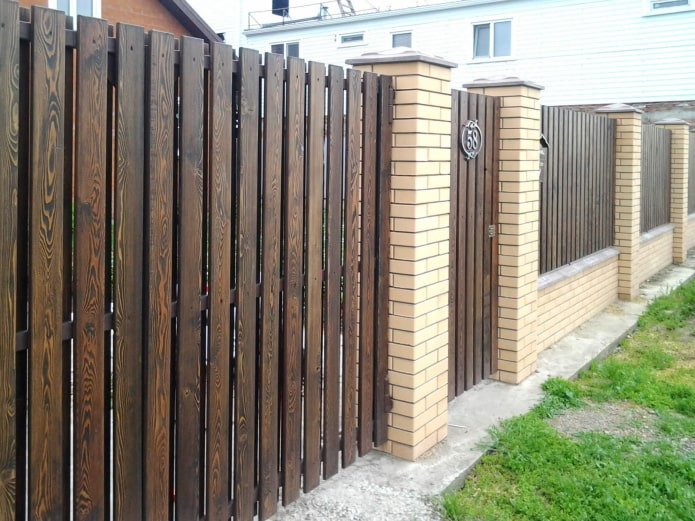
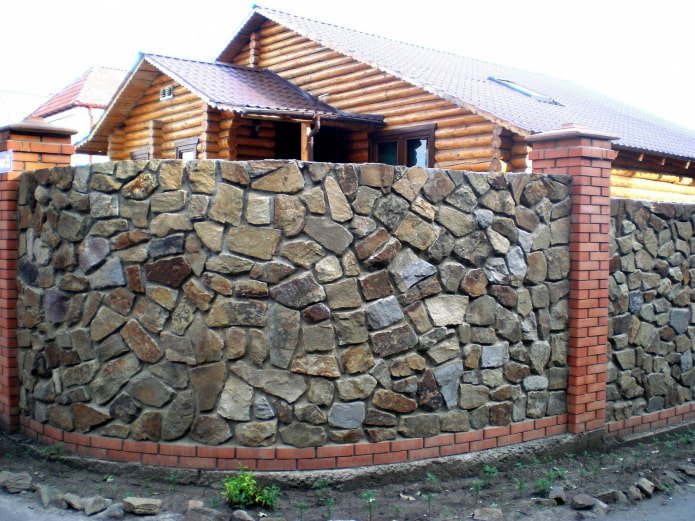
It is not necessary to combine materials along the entire perimeter, you can use different options for different areas, for example:
- picket fence with gaps in front of the front of the house at the gate, so that the garden is visible;
- slate or chain-link mesh between your and your neighbor’s plot;
- blind corrugated sheet or reinforced concrete on the side of the field, forest.
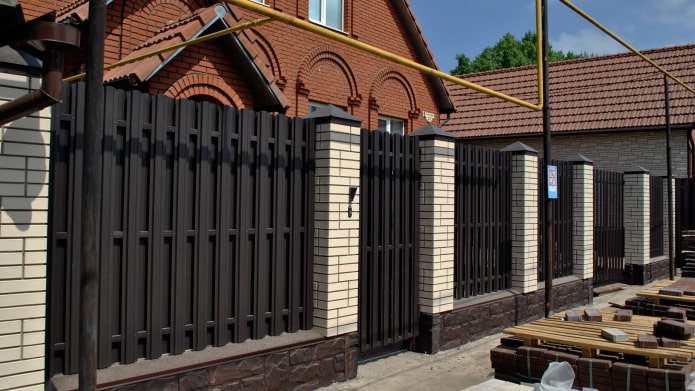
The photo shows a combination of stone, brick and metal
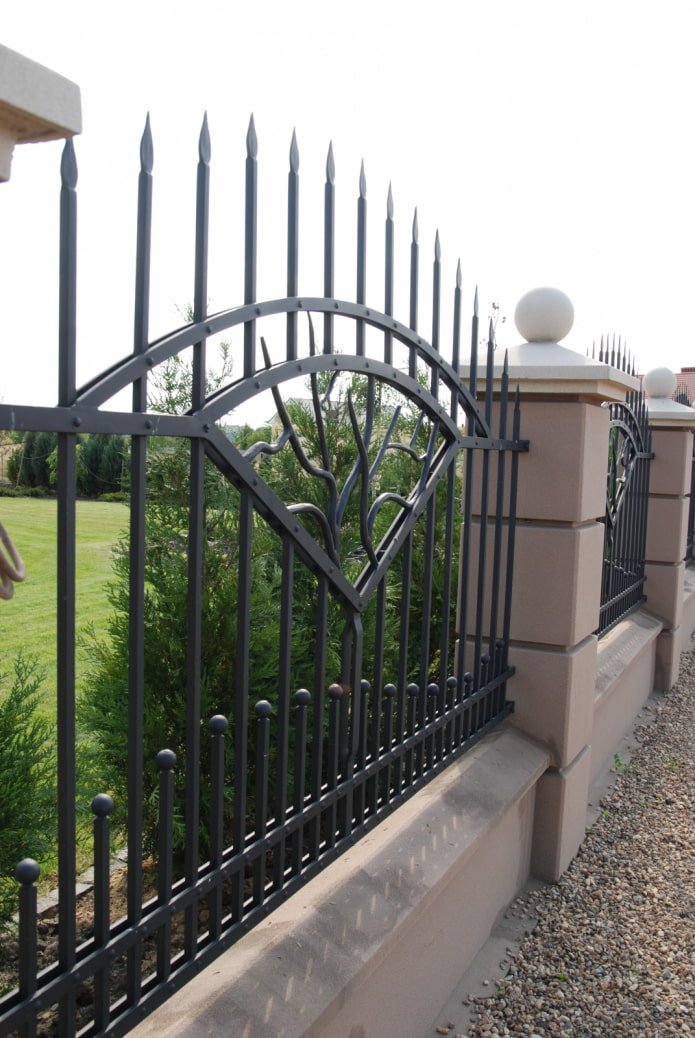
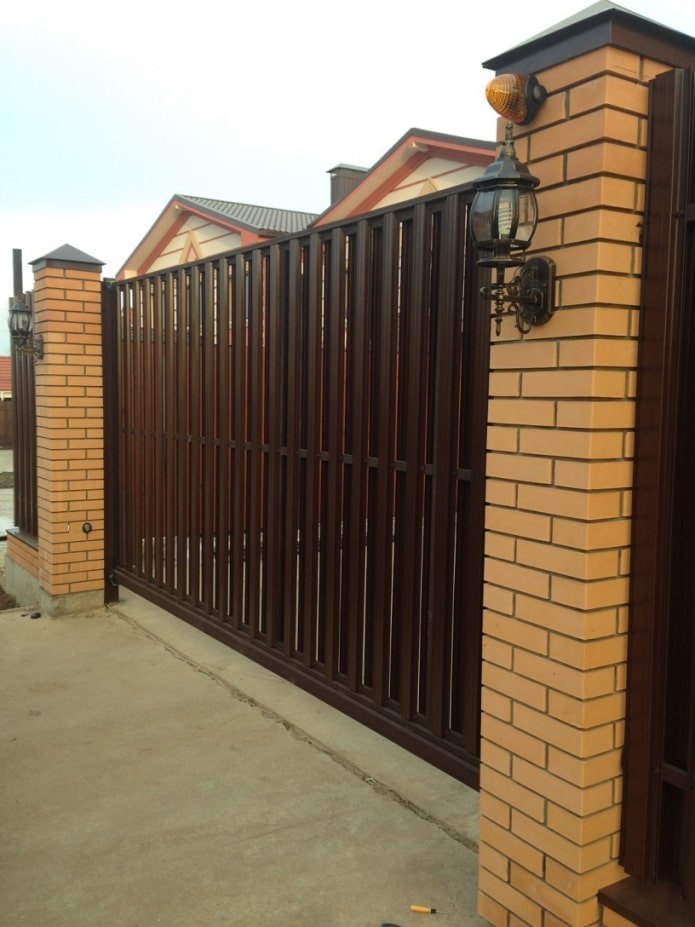
Original ideas
Of course, we have not listed all possible types of fences. There are also unusual concepts that are used less often and look original.
- For example, to expand a small area, you can install a mirror picket fence – it will literally dissolve into the environment.
- Using unedged curved boards is a natural decor option that is as close to nature as possible.
- Gabions are both a stylish decoration and a serious barrier. You can enclose the territory only with them, or combine nets with stones with wood, metal, brick.
- Why not create a fence with your own hands? The good old wattle fence is still in fashion! Suitable if you don’t need to protect, but simply fence off an area.
- Thanks to metal cutting, you can make an openwork decoration from an ordinary sheet. The pattern is limited only by your imagination – a plant motif, abstraction, favorite movie characters, etc.